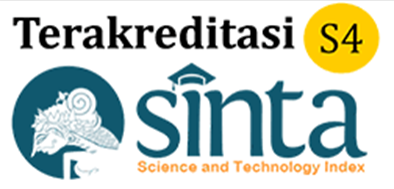Collaborative Governance dalam Perluasan Kepesertaan BPJS Ketenagakerjaan di Kota Padang
Abstract
The low level of Universal Coverage Jamsostek (UCJ) in Padang City reflects the limited access to social security protection, particularly for informal and vulnerable workers. This study aims to analyze the collaborative process among stakeholders in expanding BPJS Ketenagakerjaan participation and to identify the supporting and inhibiting factors. A descriptive qualitative method was employed through interviews, documentation, and observations, with data validated using source triangulation. Informants were selected through purposive sampling to ensure the representation of key actors. The findings reveal that the collaboration has not yet produced a significant increase in the number of participants from the informal sector. Nevertheless, the process has fostered equality of roles, stronger commitment, and more open communication among institutions. Theoretically, this research contributes to the development of Collaborative Governance studies by emphasizing the importance of process dynamics rather than solely focusing on outcomes. In terms of policy implications, the results highlight the need to strengthen regulations, provide sufficient budgetary support, and encourage active involvement of local governments to ensure the sustainability of cross-sector collaboration. Thus, efforts to expand social security coverage can become more structured, inclusive, and oriented toward the protection of informal workers who remain highly vulnerable.
References
Arrazeq, M. H., Azpha, R., Munthe, A. J., Siregar, H., & Berlianti. (2024). INDONESIA. Triwikrama: Jurnal Ilmu Sosial, 6(1).
Arrozaaq, D. L. C. (2016). Collaborative Governance (Studi Tentang Kolaborasi Antar Stakeholders Dalam Pengembangan Kawasan Minapolitan di Kabupaten Sidoarjo). Kebijakan Dan Manajemen Publik, 3, 1–13. http://repository.unair.ac.id/67685/
Burhan, B. (2010). Penelitian Kualitatif. Kencana.
Emerson, K., & Nabatchi, T. (2015). Evaluating the productivity of collaborative governance regimes: A performance matrix. Public Performance and Management Review, 38(4), 717–747. https://doi.org/10.1080/15309576.2015.1031016
Emerson, K., Nabatchi, T., & Balogh, S. (2012). An integrative framework for collaborative governance. Journal of Public Administration Research and Theory, 22(1), 1–29. https://doi.org/10.1093/jopart/mur011
Mahmudah, I., & Hertati, D. (2023). Collaborative Governance Dalam Perluasan Kepesertaan Bpjs Ketenagakerjaan Cabang Surabaya Karimun Jawa Di Kota Surabaya. Jurnal Ilmu Sosial Dan Ilmu Politik (JISIP), 12(2), 261–272. https://doi.org/10.33366/jisip.v12i2.2737
Milies, M. B., & Huberman, A. M. (1994). Qualitative Data Analysis: An Expanded Sourcebook. CA: Sage Publications.
Sugiyono. (2013). Metode Penelitian Kuantitatif Kualitatif dan R&D. In Alfabeta (19th ed., Vol. 1, Issue April). Alfabeta.
Susniwati, S., & Kurhayadi, K. (2020). Kolaborasi Tata Kelola Program BPJS Dalam Penanggulangan Defisit Program BPJS di Kota Bandung. Jurnal Ilmiah MEA (Manajemen …, 4(2), 349–359.
Wibowo, T. A. B. (2024). Collaborative Governance Pada Penyelenggaraan Jaminan Sosial Ketenagakerjaan di Kabupaten Sijunjung Provinsi Sumatera Barat. Jurnal Abulyatama, 8(1), 31–51.
Copyright (c) 2025 Jurnal Manajemen dan Ilmu Administrasi Publik (JMIAP)

This work is licensed under a Creative Commons Attribution 4.0 International License.












